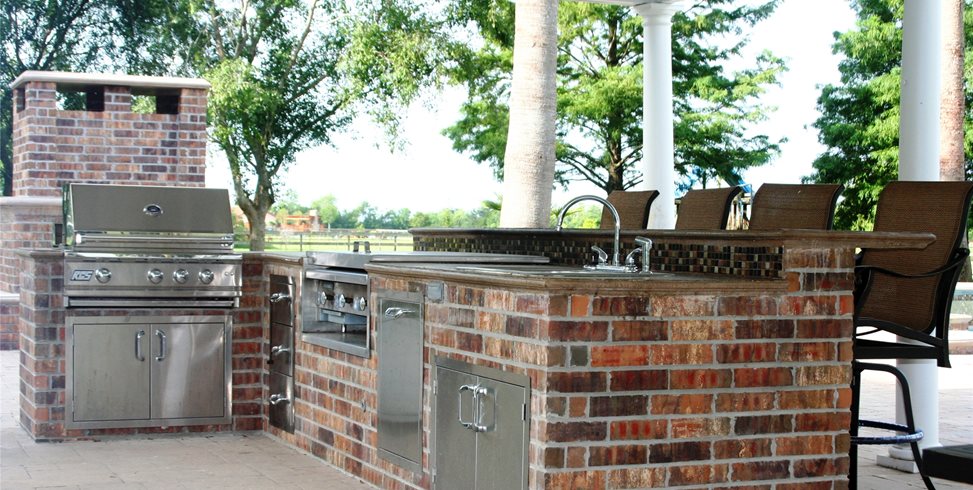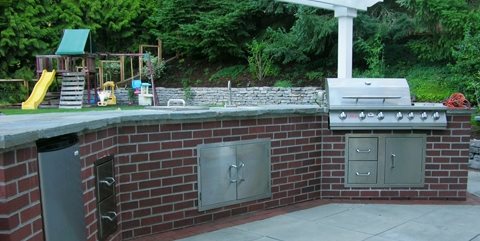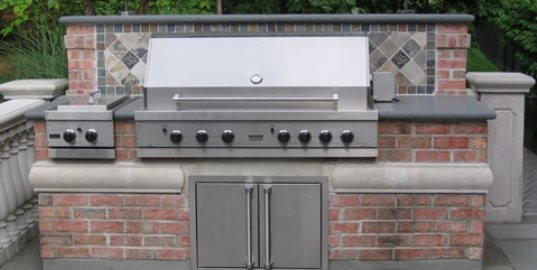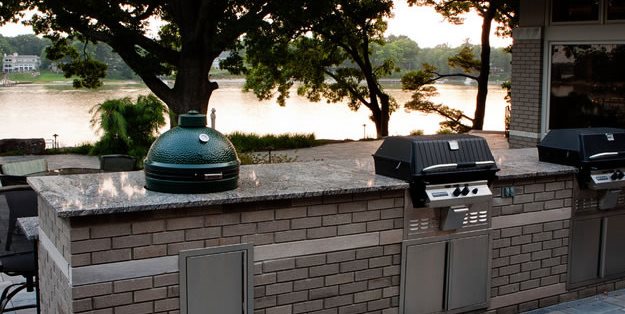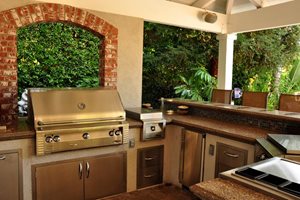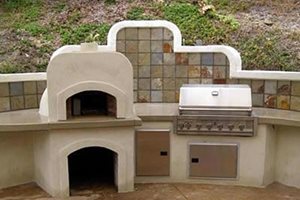Brick Barbeque Veneer
Information about facing an outdoor kitchen with brick veneerIf you're looking for a barbeque veneer that's durable and has timeless appeal, brick is a great option. A brick veneer is a good way to get a quality finish without having to construct the entire base of your kitchen out of brick. Brick laying is labor-intensive and requires professional masonry skills; however, a brick veneer is much simpler.
Brick remains a popular material in certain regions where it is already well established in the architectural vernacular. It is almost always used in projects where brick is pre-existing and should logically be extended into the outdoor kitchen or barbecue center. The wide range of clay colors as well as certain finishes such as manufactured "used" brick is driving some fresh new applications as the industry provides newer options.
In some regions such as the Northwest, red brick is all but dead and only the dark, clinker types of brick are ever seen. In the deep South, red brick is a standard that is also popular as far north as Washington DC and into parts of New England.
A brick veneer can be applied to a wood or steel frame, or a concrete block structure. For wood or steel framed bases, cement backer board will need to be installed before adding a brick veneer, this is not necessary for concrete block. Backer board provides a solid moisture and heat barrier on which to attach the brick veneer.
There are two types of brick veneer: full-brick and thin-brick. A full-brick veneer consists of whole bricks mortared together up the face of the structure. This type of veneer should not be applied directly to the structure; a gap of at least one inch is need for ventilation. Additionally, corrugated metal ties should be used intermittently for extra support. A thin-brick veneer consists of ½ inch thick bricks attached directly to the concrete block or backer board using mortar. Be sure that the brick veneer you select is not too heavy for the backer board. Check with your contractor or veneer supplier to see if reinforcement is need.
Resources:
Cultured Stone offers an beautiful used brick veneer
Eldorado Stone offers manufactured brick veneer
Brick-It offers brick veneer panel systems in a variety of colors
Arto Brick Company offers brick veneers in a many styles, including adobe brick
GenStone offers artificial brick siding with a vintage appearance

 Backyards
Backyards
 Front Yards
Front Yards
